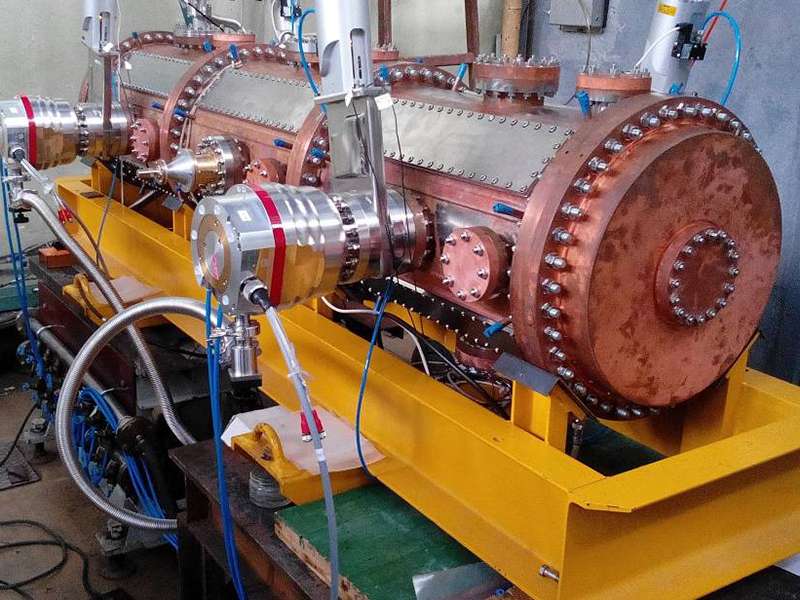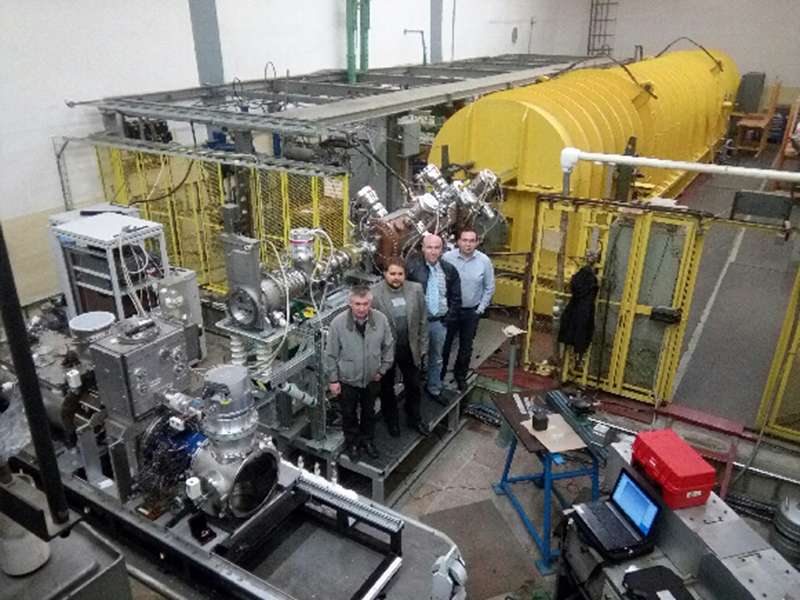Linear deutron and light ion accelerator successfully tested in Dubna

The Joint Institute for Nuclear Research has successfully launched a new linear deuteron and light ion accelerator developed in MEPhI for the NICA collider. The injector successfully accelerated a beam at the design energy of 5 MeV/nucleon.
The development of the linear accelerator started in 2011, seeking to inject protons, polarized deuterons and light ions into the collider NICA, which is under construction. Its will replace a high-voltage electrostatic pre-injector, developed more than 40 years ago, with a modern accelerator capable of spatially uniform quadrupole focusing. The project is being realized by a team of specialists from JINR, MEPhI and Kurchatov Institute.
After two years of construction, the Russian Federal Nuclear Center – VNIITF (Snezhinsk) has made the accelerator cavity. Kurchatov Institute has also developed and built a high-frequency supply system. The physical start-up of the new accelerator was conducted in December, 2015.
The results of the work have been reported at the 7th International Particle Accelerators Conference, IPAC'2016, held in the middle of May, 2016 in Busan, South Korea. Currently, the injection complex is getting ready for work with a new source of polarized protons and deuterons. In the future, the researchers plan to develop a new superconductive linear accelerator with energy of 25 to 30 MeV to replace the obsolescent LU-20.

Provided by National Research Nuclear University





















